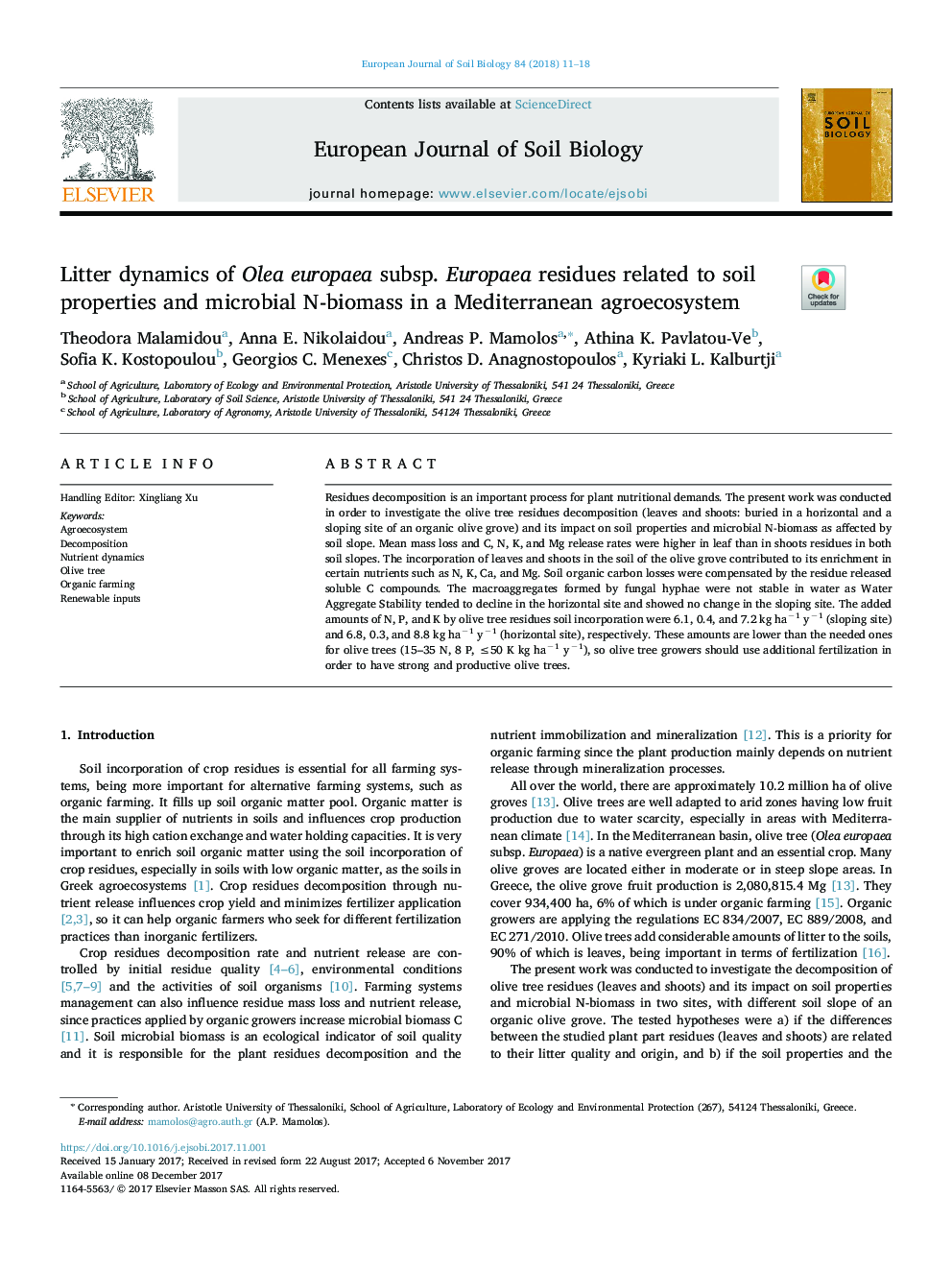| Article ID | Journal | Published Year | Pages | File Type |
|---|---|---|---|---|
| 8848400 | European Journal of Soil Biology | 2018 | 8 Pages |
Abstract
Residues decomposition is an important process for plant nutritional demands. The present work was conducted in order to investigate the olive tree residues decomposition (leaves and shoots: buried in a horizontal and a sloping site of an organic olive grove) and its impact on soil properties and microbial N-biomass as affected by soil slope. Mean mass loss and C, N, K, and Mg release rates were higher in leaf than in shoots residues in both soil slopes. The incorporation of leaves and shoots in the soil of the olive grove contributed to its enrichment in certain nutrients such as N, K, Ca, and Mg. Soil organic carbon losses were compensated by the residue released soluble C compounds. The macroaggregates formed by fungal hyphae were not stable in water as Water Aggregate Stability tended to decline in the horizontal site and showed no change in the sloping site. The added amounts of N, P, and K by olive tree residues soil incorporation were 6.1, 0.4, and 7.2 kg haâ1 yâ1 (sloping site) and 6.8, 0.3, and 8.8 kg haâ1 yâ1 (horizontal site), respectively. These amounts are lower than the needed ones for olive trees (15-35 N, 8 P, â¤50 K kg haâ1 yâ1), so olive tree growers should use additional fertilization in order to have strong and productive olive trees.
Related Topics
Life Sciences
Agricultural and Biological Sciences
Soil Science
Authors
Theodora Malamidou, Anna E. Nikolaidou, Andreas P. Mamolos, Athina K. Pavlatou-Ve, Sofia K. Kostopoulou, Georgios C. Menexes, Christos D. Anagnostopoulos, Kyriaki L. Kalburtji,
